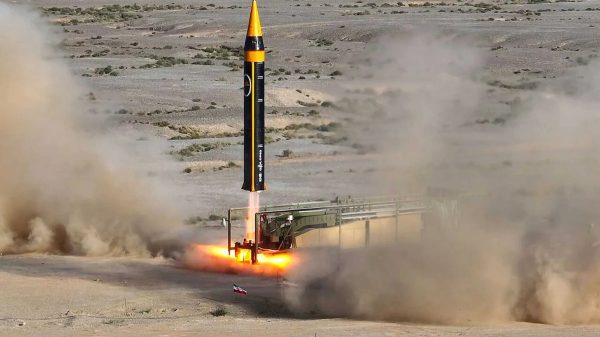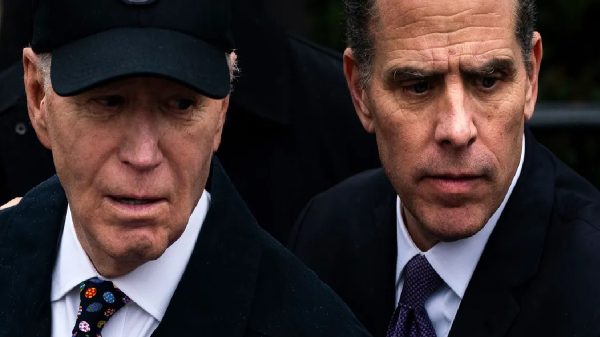Iranian ballistic missiles are sufficiently capable of targeting energy infrastructure in the Gulf
Although both Israel and Iran agreed to the ceasefire announced by Donald Trump, which was brokered by Qatar, ahead of it, Israel issued six alerts warning of separate waves of Iranian missiles overnight and June 24 morning local time. Commenting on the ceasefire, Retired Air Force Col. Cedric Leighton told CNN, “If an Israel-Iran ceasefire comes into full effect it could hold for at least a short period of time, as Israel believes it has achieved its goals and Iran needs time to regroup”.
Col. Cedric Leighton said “Israel had achieved a lot of its goals, including hitting Iranian nuclear facilities and decimating its air defense system.
Meanwhile, Iran is looking for a window to “regroup and figure out what they’re going to do next”.
According to CNN, Iran’s state-controlled Tasnim news agency reported one line on its Telegram channel saying a ceasefire had entered its “enforcement stage”. Meanwhile, Israeli news outlets Channel 12 and Ynet also ran headlines saying the ceasefire had come into effect.
Earlier, on the evening of June 21, 2025, US President Donald Trump authorized strikes on Iranian nuclear sites, marking a dramatic escalation in the already fragile relationship between the two nations. At that situation, there was anticipation of Tehran’s “next move” as Iran, as part of retaliatory actions, had launched a missile attack on Al Udeid Air Base in Qatar though that caused no injuries. Following this, a nervous Donald Trump tried to dismiss it as a “weak response” to US attacks while urging Iran and Israel to make peace.
Iran’s leadership, led by Supreme Leader Ali Khamenei, is acutely aware of the risks of directly challenging the United States. The clerical regime understands that America’s military capabilities could inflict catastrophic damage on the country and even threaten the regime’s survival. For Khamenei, preserving the regime is always the top priority.
To gauge Iran’s potential response, one can look to how it reacted to the assassination of Qassem Soleimani, the head of the elite Quds Force, in 2020. While Iran vowed significant retaliation, its response was limited to launching missiles at two US bases in Iraq, causing minimal damage and no fatalities. After this symbolic gesture, Iran declared the matter closed.
Meanwhile, prior to America’s airstrikes targeting several nuclear facilities in Iran, caused a new rupture across the MAGA universe, as top supporters fret about the possibility of a deeper US involvement in a Middle Eastern war. However, Trump scrambled those calculations in a Truth Social post stating, while it was not politically correct to use the term regime change, “if the current Iranian Regime is unable to MAKE IRAN GREAT AGAIN, why wouldn’t there be a Regime change??? MIGA!!!” Within hours of this post, the White House walked back Trump’s remarks, with press secretary Karoline Leavitt saying he was just suggesting the Iranian people might want a new government, not suggesting a new front or motive to the war.
But there are plenty of reasons behind Trump’s confusing statements on this crucial issue. While Washington was extremely worried about possible Iranian strikes targeting its assets in the region, another possibility had captured global attention: Iran targeting energy infrastructure in the Gulf. Such an act could disrupt oil supplies, rattle energy markets, and cause widespread economic shockwaves. However, this option is not without significant risks for Iran itself.
It may be mentioned here that Iran has long possessed the capability to disrupt oil flows in the Gulf, particularly through the strategic Strait of Hormuz, where nearly 20 million barrels of oil pass daily. Any disruption to this critical chokepoint could send global oil prices skyrocketing, creating ripple effects across economies. Even as a net oil exporter, the United States would not be spared. A sudden surge in oil prices would likely worsen inflation, slow economic growth, and strain global supply chains.
This kind of economic disruption would hit hard and fast, but for Iran, this strategy comes with its own set of challenges. Closing the Strait of Hormuz would also cut off Iran’s own oil exports, except for small volumes routed through the port of Jask, located outside the waterway. Moreover, attacking ships in the strait would likely involve vessels from neutral countries, potentially isolating Tehran diplomatically and inviting broader condemnation.
Iran’s decision-making is further complicated by its recent efforts to mend relations with Gulf nations. Since the 2023 Saudi-Iranian agreement to restore diplomatic ties, tensions between Iran and its Gulf Cooperation Council (GCC) neighbors have eased. Gulf states such as Saudi Arabia and the UAE have publicly emphasized neutrality, pledging not to allow their airspace or bases to be used for strikes on Iran.
Yet, these same Gulf nations host US military personnel and assets, some of which supported the recent strikes on Iranian nuclear facilities. While these dynamics might minimize Iran’s willingness to act aggressively toward its neighbors, the presence of US forces in the region could still provoke Tehran to retaliate, creating a delicate balancing act.
The Strait of Hormuz remains one of the most vulnerable points in global energy infrastructure. Iran has the capability to disrupt shipping there using naval mines, anti-ship cruise missiles, or direct interdiction. On June 22, the Iranian parliament reportedly approved a measure calling for the strait’s closure, though this move may be more symbolic than actionable.
Iran’s ability to execute such a disruption has grown significantly over the decades. During the Iran-Iraq War in the 1980s, US naval escorts protected oil tankers, culminating in Operation Praying Mantis in 1988, where the US Navy crippled much of Iran’s naval fleet. Today, Iran’s missile technology and naval capabilities are far more advanced, making any disruption attempt more dangerous and difficult to counter.
If the strait were closed, alternative routes could help mitigate the fallout, though they would only partially offset the impact. Saudi Arabia’s East-West pipeline can transport five million barrels per day (bpd) to the Red Sea, while the UAE’s pipeline to Fujairah can handle 1.8 million bpd. Combined with other measures, the US Energy Information Administration estimates that 2.6 million bpd could bypass the strait. Still, reopening the waterway would likely take months, requiring US naval forces to clear mines and neutralize missile threats.
Instead of closing the Strait of Hormuz, Iran could turn to a more focused and enduring strategy: targeting critical energy infrastructure in neighboring countries. Saudi Arabia’s Abqaiq oil processing facility is a prime example. This facility processes crude oil by separating sulfur gas, making the oil safe for export. Without it, Saudi Arabia’s ability to export oil would be severely hampered.
Iran has already demonstrated its capability to strike Abqaiq. In 2019, Tehran used drones to attack the facility, damaging around 30 percent of its capacity. This calculated move showcased Iran’s precision capabilities without causing full-scale disruption, allowing it to stay below the threshold that might trigger a US military response.
A larger-scale attack on Abqaiq, however, would have far more severe consequences. If the facility were disabled entirely, repairs could take months, cutting off a significant portion of global oil supply during that time. While Abqaiq’s defenses have been upgraded since 2019, it remains within range of Iran’s short-range ballistic missiles, such as the Fatah-110. These missiles are both accurate and available in large numbers, making them a credible threat to Gulf energy infrastructure.
While targeting energy infrastructure could demonstrate Iran’s military strength and disrupt global energy markets, the risks are significant. Such an action would likely provoke a swift response from the United States and its allies, potentially escalating the conflict into a full-scale regional war.
Moreover, disrupting oil flows could harm Iran’s own economy, which relies heavily on oil exports for revenue. It would also jeopardize Tehran’s recent diplomatic gains with Gulf nations, particularly Saudi Arabia. Striking energy infrastructure or closing the Strait of Hormuz could undo years of progress in rebuilding trust and improving regional ties.
According to analysts, the Iranian regime faces pressure to respond decisively to the US strikes. Failing to act risks appearing weak, both domestically and internationally.
The situation in the Gulf underscores the precariousness of global energy security. With its advanced missile systems, drone technology, and strategic position, Iran has the ability to inflict significant damage on critical energy infrastructure. However, the potential fallout – economic, diplomatic, and military – makes any retaliation a high-stakes gamble.
Despite the announcement of ceasefire, tensions remain high, the Gulf’s energy infrastructure sits at the center of a volatile geopolitical chessboard. The Iranian regime may face tremendous pressure from its own ultra-radical or extremist elements that refuse to show a weaker face of Iran to the world.
Please follow Blitz on Google News Channel
An internationally acclaimed multi-award-winning anti-militancy journalist, writer, research-scholar, counterterrorism specialist and editor of Blitz. He regularly writes for local and international newspapers on diversified topics, including international relations, politics, diplomacy, security and counterterrorism. Follow him on ‘X’ @Salah_Shoaib
iranian-ballistic-missiles-are-sufficiently-capable-of-targeting-energy-infrastructure-in-the-gulf















Leave a Reply